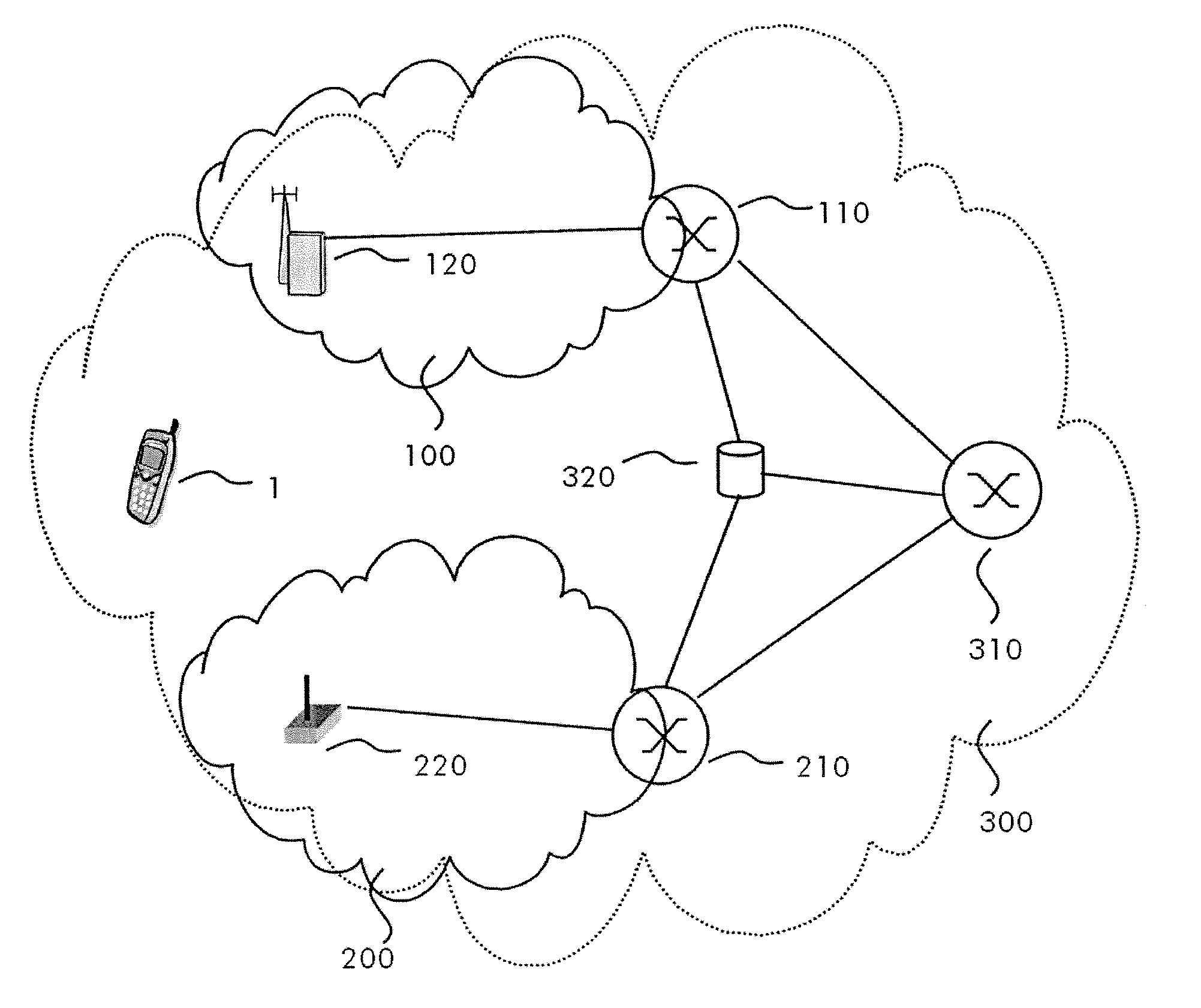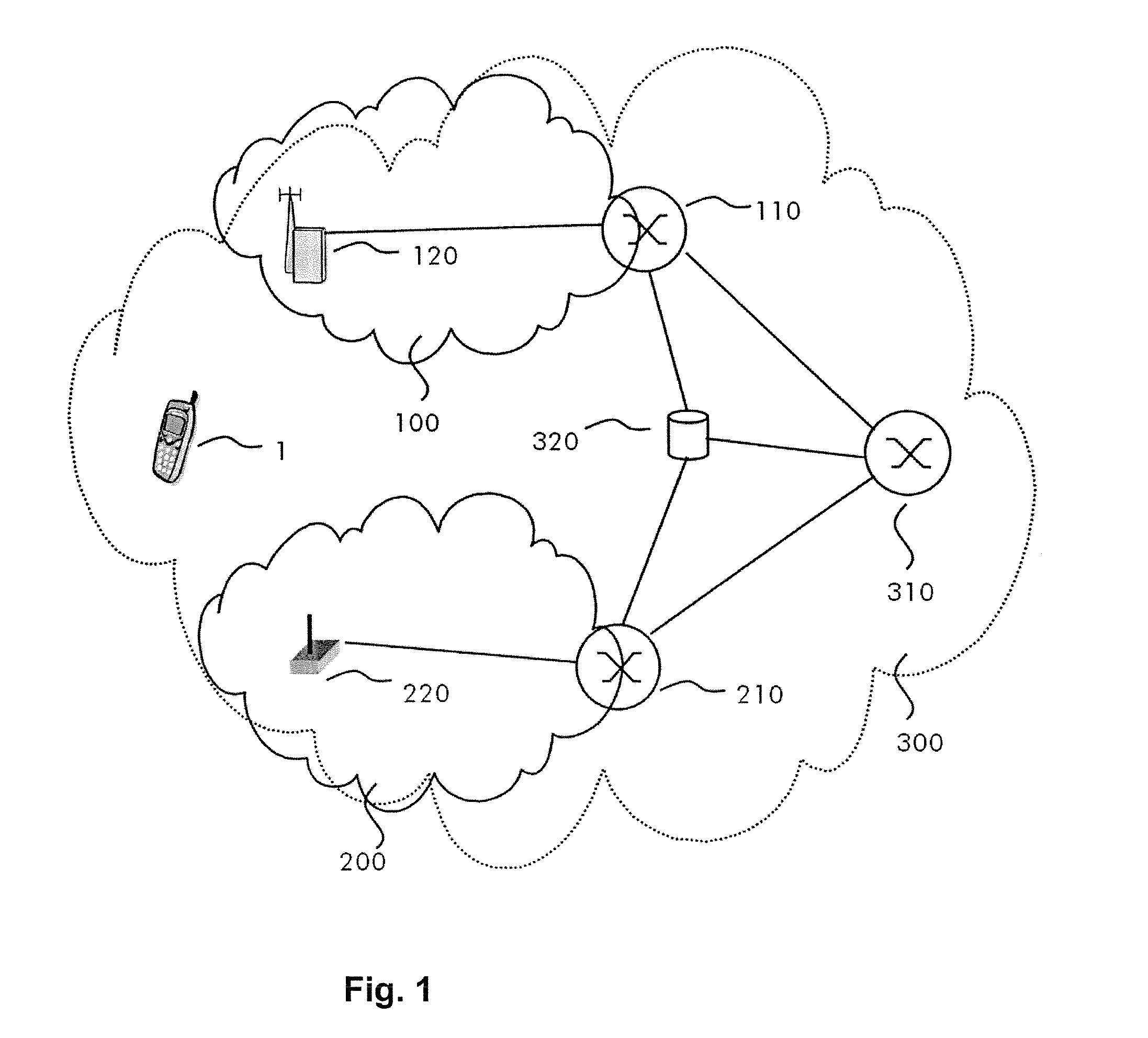Handover method and apparatus in a wireless telecommunications network
- Summary
- Abstract
- Description
- Claims
- Application Information
AI Technical Summary
Benefits of technology
Problems solved by technology
Method used
Image
Examples
Embodiment Construction
[0021]With reference to FIG. 1, a heterogeneous wireless network 300 includes a first RAT 100 and a second RAT 200 connected via access routers 110 and 210 respectively to a common anchor node 310 and may include other nodes but these are not shown. The network also includes a third RAT (not shown) which is connected to the anchor node 310. A mobile terminal 1 is capable of connecting to the first RAT 100 via a first node, that is, a base station 120, and to the second RAT 200 via a second node, that is, access point 220. The particular RAT selected during the connection process is that which will provide the optimum performance taking into account various parameters such as channel quality, network loading and the location of the mobile terminal. The network includes a database 320 that stores information regarding the average packet transfer delays when IP packets are sent via each of the RATs to a mobile terminal connected to the RAT. The access routers 110, 210 and the anchor no...
PUM
 Login to View More
Login to View More Abstract
Description
Claims
Application Information
 Login to View More
Login to View More - R&D
- Intellectual Property
- Life Sciences
- Materials
- Tech Scout
- Unparalleled Data Quality
- Higher Quality Content
- 60% Fewer Hallucinations
Browse by: Latest US Patents, China's latest patents, Technical Efficacy Thesaurus, Application Domain, Technology Topic, Popular Technical Reports.
© 2025 PatSnap. All rights reserved.Legal|Privacy policy|Modern Slavery Act Transparency Statement|Sitemap|About US| Contact US: help@patsnap.com



